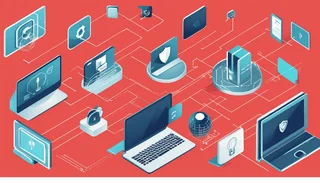Overview of the CompTIA 220-1101 Exam
The CompTIA A+ 220-1101 exam is an essential certification for IT professionals looking to build a strong foundation in hardware and networking. This exam focuses on mobile devices, networking technology, hardware, virtualization, and cloud computing. Earning this certification demonstrates a candidate’s ability to troubleshoot and support IT infrastructure. DumpsBoss provides comprehensive study materials, including real exam questions, practice tests, and expert explanations to help candidates pass the exam with confidence.
Understanding Email Protocols
Email protocols are the set of rules that govern how emails are sent, received, and stored. Understanding these protocols is crucial for IT professionals, as they ensure seamless email communication and troubleshoot email-related issues. The key email protocols covered in the CompTIA 220-1101 exam include:
-
SMTP (Simple Mail Transfer Protocol) – Used for sending emails from a client to a mail server or between mail servers.
-
IMAP (Internet Message Access Protocol) – Allows users to access and manage their emails on the server without downloading them.
-
POP3 (Post Office Protocol 3) – Downloads emails from a server to a local device and removes them from the server.
-
MAPI (Messaging Application Programming Interface) – A protocol primarily used with Microsoft Exchange for advanced email features.
Mastering these protocols ensures IT professionals can configure email clients, resolve connectivity issues, and maintain secure email communication.
Email Server Types
Email servers play a crucial role in the communication process by handling email delivery, storage, and retrieval. There are several types of email servers, including:
-
Outgoing Mail Servers – Also known as SMTP servers, these are responsible for sending emails from the sender’s client to the recipient’s mail server.
-
Incoming Mail Servers – These include IMAP and POP3 servers, which store and manage received emails.
-
Webmail Servers – These provide web-based access to emails without requiring a dedicated client application.
-
Enterprise Mail Servers – These are robust solutions, such as Microsoft Exchange or Google Workspace, designed for corporate environments with enhanced security and collaboration features.
Understanding these server types is crucial for IT professionals who configure, maintain, and troubleshoot email services in business environments.
How Email Servers Work
Email servers function through a complex process of routing, storage, and retrieval. The basic workflow includes:
-
Email Composition and Sending – The user composes an email in a client application, which connects to an SMTP server to initiate the sending process.
-
Email Routing – The SMTP server looks up the recipient’s domain using DNS (Domain Name System) to determine the correct mail server.
-
Email Transfer – The email is relayed through multiple mail transfer agents (MTAs) before reaching the recipient’s mail server.
-
Email Storage – The recipient’s mail server stores the email until the user retrieves it using an IMAP or POP3 client.
-
Email Retrieval – The recipient accesses the email using a client application or webmail service.
This process ensures reliable and efficient email communication. IT professionals must understand these steps to troubleshoot and optimize email systems.
Common Email Server Software
Several popular email server software solutions are widely used in both personal and enterprise environments. Some of the most common ones include:
-
Microsoft Exchange – A widely used enterprise mail server that integrates with Microsoft Outlook and Office 365.
-
Google Workspace (Gmail for Business) – A cloud-based email solution offering robust security and collaboration features.
-
Postfix – A free and open-source mail transfer agent (MTA) known for its security and performance.
-
Exim – A flexible mail transfer agent commonly used on Linux-based systems.
-
Zimbra – A collaboration suite that offers email, calendar, and contact management features.
-
Sendmail – One of the oldest and most widely used MTAs, though it has been largely replaced by more modern solutions.
IT professionals should be familiar with these email server options to effectively manage business email solutions and ensure optimal performance.
Importance in CompTIA 220-1101 Exam
Email communication remains a critical component of IT infrastructure, making knowledge of email protocols, servers, and troubleshooting essential for IT professionals. The CompTIA 220-1101 exam tests candidates on their ability to:
-
Configure email clients and servers.
-
Understand and apply email protocols like SMTP, IMAP, and POP3.
-
Troubleshoot email connectivity and performance issues.
-
Implement security measures to prevent email-based attacks.
-
Support enterprise email solutions like Microsoft Exchange and Google Workspace.
DumpsBoss provides expertly curated study guides, practice questions, and real exam dumps to help candidates thoroughly prepare for the 220-1101 exam. By using DumpsBoss resources, candidates can gain in-depth knowledge and increase their chances of passing the exam on the first attempt.
Conclusion
The CompTIA 220-1101 exam is an essential certification for IT professionals, covering fundamental hardware and networking topics, including email server configurations. Understanding email protocols, server types, and troubleshooting techniques is crucial for IT professionals managing business communication infrastructure. By preparing with DumpsBoss study materials, candidates can master these concepts, confidently pass the exam, and advance their careers in IT support and administration.
Special Discount: Offer Valid For Limited Time “220-1101 Exam” Order Now!
Sample Questions for CompTIA 220-1101 Dumps
Actual exam question from CompTIA 220-1101 Exam.
Which type of server supports the SMTP, POP, and IMAP protocols?
A) Web Server
B) Database Server
C) Mail Server
D) DNS Server


